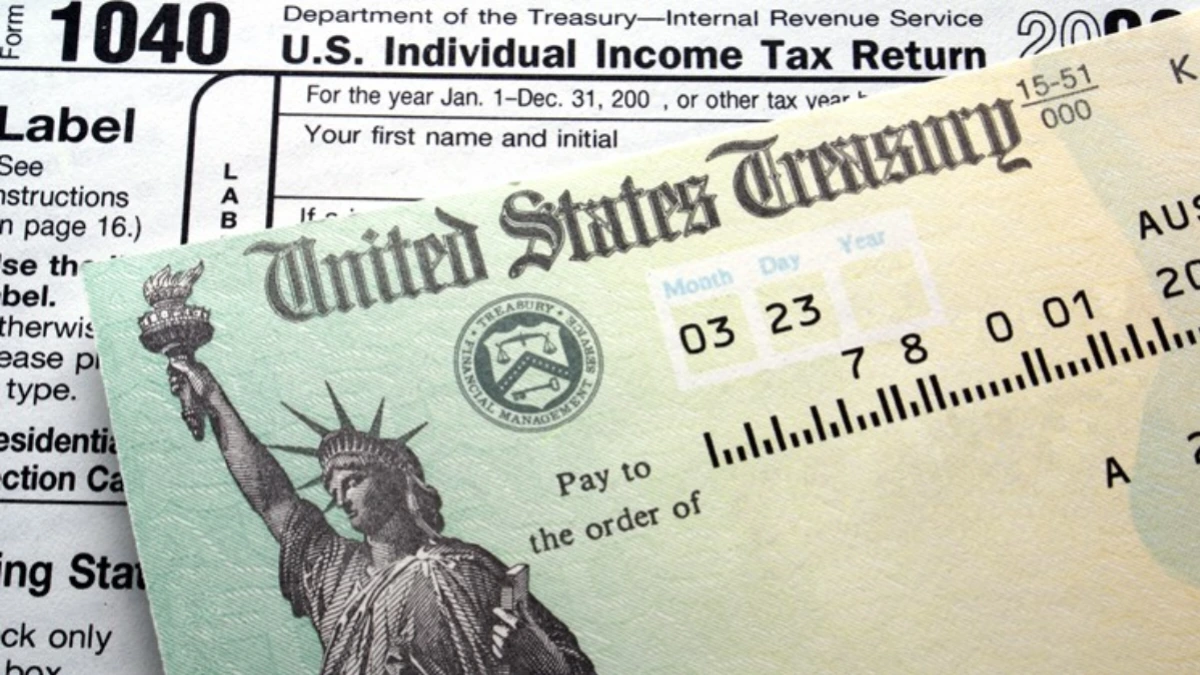WASHINGTON — Millions of Americans could see larger tax refunds or smaller tax bills when filing returns in 2026, due to the combined effects of President Donald Trump’s latest tax and spending package and a lag in Internal Revenue Service (IRS) updates.
Economists estimate the total savings could reach as high as $50 billion, though experts warn that wealthier households are likely to benefit most from the temporary gap.
Oxford Economics lead economist Nancy Vanden Houten said in a report this week that the IRS has not yet adjusted its federal withholding tables to reflect new provisions from the Trump backed tax law enacted in July.
Because of that delay, many taxpayers are still being taxed under the previous, higher rates, meaning they could receive substantial refunds next year.
The Trump tax law, passed in July 2025, introduced several retroactive provisions designed to stimulate the economy ahead of the 2026 fiscal year.
Among these are a higher child tax credit, an additional deduction for seniors, and the elimination of federal taxes on tips and overtime income.
However, the IRS typically updates its withholding tables at the start of each year to reflect inflation and any legislative changes.
Since the updates have not yet been made, many employees have continued to have too much withheld from their paychecks throughout 2025.
“The only way taxpayers can benefit from these retroactive provisions this year is by manually adjusting their withholdings or estimated tax payments,” Vanden Houten said.
But most employers are still using the old tables, so many workers will end up overpaying until they file in 2026. Economists expect this delay to have widespread effects.
Oxford Economics projects that total taxpayer savings could reach $50 billion, creating what some analysts call a “built in refund surge” next spring.
“The benefits of the new retroactive tax cuts skew disproportionately to taxpayers in the top income quintile,” Vanden Houten said.
“While all income groups are likely to see some benefit, higher earners who pay more in taxes will naturally receive the largest refunds.”
The Tax Policy Center, a nonpartisan think tank, previously analyzed the Trump tax package and found that while it offered broad based tax relief, nearly half of the total monetary benefit flowed to the top 20 percent of earners.
“Tax relief is always popular, but when it’s retroactive, the distribution often favors those who have more taxable income,” said Daniel Whitaker, a senior analyst with the Tax Policy Center.
Lower and middle income families might see a few hundred dollars back, but wealthier households could see thousands. According to the IRS, the average refund in 2025 was $2,939.
A 17 percent increase, as projected by Oxford Economics, would translate into nearly $500 more per filer on average. But not all of the estimated $50 billion in additional tax savings will appear as refunds.
Some taxpayers may simply owe less when they settle up in April 2026. “It may be that taxpayers are simply choosing to reduce their liability further when final payments are due next year,” Vanden Houten said.
“Either way, the effect is the same: a delayed but noticeable bump in disposable income.” The IRS typically revises its withholding tables annually to reflect inflation adjustments and legislative changes.
In this case, however, administrative delays following the midyear passage of the tax law appear to have slowed that process.
A spokesperson for the US Treasury Department declined to comment on when the new tables would take effect but confirmed that updates are in progress.
For many Americans, even modest tax relief could provide breathing room amid persistent inflation. Prices for groceries, insurance premiums and housing remain high despite cooling inflation rates.
“It’s been tough keeping up with food prices,” said Marisol Reyes, a restaurant worker in Dallas. “If I get a few hundred dollars more on my refund, that’s going straight into bills and savings.”
However, others say the uneven distribution of benefits could reignite debates about income inequality.
“I don’t think the wealthy need more help,” said Thomas Barrett, a public school teacher in Ohio. “My paycheck hasn’t changed, and I don’t have a tax advisor to tell me how to adjust my withholdings.”
Economists also note that because the tax law was enacted midyear, many Americans remain unaware that they can manually lower their withholdings now to benefit sooner.
“There is no evidence that this is occurring on a significant scale,” Vanden Houten said, noting that most employees rely on default payroll systems.
The IRS is expected to update withholding tables in early 2026, meaning the windfall effect will likely be temporary. Once the adjustments are made, refunds will normalize as taxpayers’ withholdings align with the new tax rates.
Still, the short term boost could provide some relief to households heading into an uncertain economic year. Analysts say the extra cash flow could slightly support consumer spending, though it is unlikely to shift overall economic momentum.
“If households use the refunds to pay down debt or catch up on expenses, it could help stabilize spending,” Whitaker said. “But the macroeconomic impact will probably be modest.”
Longer term, policy experts say the situation underscores the complexity of retroactive tax laws.
“Anytime Congress enacts tax changes midyear, implementation delays are almost inevitable,” said Emily Chen, a former IRS policy adviser now at Georgetown University. It’s a reminder that administrative timing matters just as much as policy intent.
As Americans prepare for the 2026 tax season, many may find themselves with unexpectedly larger refunds or smaller tax bills a rare case where bureaucratic delay works in taxpayers’ favor.
Yet economists caution that the benefits will not be evenly shared. While the IRS works to update its systems and align with the Trump tax law, experts say the broader question remains whether temporary windfalls will offer lasting relief for households still facing high living costs.

